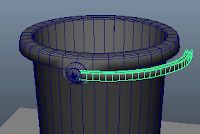Does multi-tasking give you a real or false sense of having accomplished something?
Like the article suggests, multi-tasking does give us a false sense of having accomplished something. This is probably because we're using our brains more than usual, such that we have the illusion that we're doing better than usual. I feel that multi-tasking takes a toll on the quality of our work. For example, if we're working on a piece of work while facebooking, texting and whatnot, the amount of effort that goes into the piece of work would be a lot lesser than if we just work on the piece of work without distractions.
As for me, I feel that multi-tasking is sometimes acceptable, depending on the situation. For example, if I'm studying for an exam or trying to complete a complex and important project, I'll most likely only focus on my work. However, if the workload is less stressful, I might multi-task, probably listening to music and snacking at the same time. Although it gives us a false sense of having accomplished something, multi-tasking also allows us to complete several tasks at the same time. Hence, I feel that there're both advantages and disadvantages when it comes to multi-tasking.
Is learning 3D and design different from learning programming, or is all learning the same? Why?
To me, 3D design is very different from programming. I'll probably compare them with art and mathematics respectively. In 3D design, we've to be creative and observant to create realistic or impressive models, whereas in programming, we've to be really careful and sure with codes as one mistake might cause the program to have errors.
I feel that 3D design is easier for me. This is probably due to the factor of interest. I've always been interested in art and modeling, hence I pay more attention to the subject. When modeling, our models might be different from others, in the sense that there isn't any right or wrong, as long as we fulfill the criteria. Whereas for programming, I find it really dry and hard to understand, as there're many 'rules' to follow and one mistake might cause the programe to fail.
Hence, learning is different for different subjects as there're many factors to consider.
The article that states that "Learning is actually a very complex operation for an individual”. Do you agree with this? Do you feel that you approach your learning in the best way – if yes, how, and if no, how can you change your work style?
Personally, I agree to a small extent, as feel that this statement is dependent on the individual. No doubt, some people tend to learn faster than others. This might be due to their approaches to learning, or might just be the way their brains work. Hence, for the slow learners, learning might be more complex and time consuming for them.
My approach in learning might not be the best way, but I feel that it's alright for me. I say this because my mind cannot hold loads of information for a long period of time. That's why, during exams, I do last minute studying. If I study a week before a test, all the information gets lost before the week ends. If I study the night before a test, it still holds the information the next day for my test. I know this isn't the best way to learn, but I've to accomodate to myself. However, I am trying to understand more, rather than memorising the information.
What are your thoughts about the last paragraph in the extract?
I agree with Nass that states that law students probably are not sitting there thinking, Boy, I'd rather play Freecell than learn the law. If they're attending the class, it shows that they have at least a drop of interest in the subject. If they'd rather play Freecell, they wouldn't even attend the class. "Boy, I can do something really easy, or I can do something really hard." I agree with this statement, as I think it's a choice the individual has to make. It's really easy to give in to temptation, and we can't really blame a person if he's more interested in Freecell rather than law, can we? However, a commited individual would curb the temptation and pay attention in class, and he really needs to, will play Freecell during another time.
Should your lecturer also focus on your work attitude, or just leave you to sink or swim on your own? Why?
I feel that lecturers should focus on our work attitude, but not to a very great extent. They should monitor our work from time to time, and if something seems wrong, find out the cause of it and try to solve it with us. If our grades are deproving due to other distractions such as games, our lecturers should definitely step in to give us advice. However, they should also give us a little freedom in the sense that they should not tell us how to learn and expect us to follow it strictly. This is because we all have different learning approaches and for learning, 'one size definitely doesn't fit all'.

























